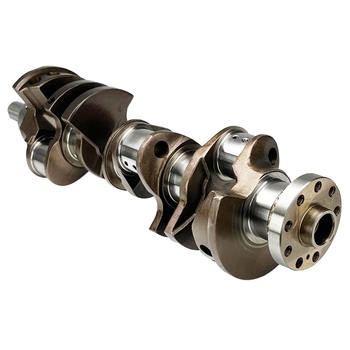The Role of the Crankshaft in an Internal Combustion Engine
To be honest, the internal combustion engine is a marvel of human ingenuity. One of its most critical components is the crankshaft. Frankly speaking, without it, your car wouldn't move an inch. So, how does a crankshaft work? In my experience, understanding this can give you a whole new appreciation for your vehicle's engineering.
Converting Reciprocating Motion to Rotary Motion
The primary function of a crankshaft is to convert the reciprocating motion of the pistons into rotary motion. This rotary motion is what ultimately turns the wheels of your car. It's absolutely necessary for the smooth operation of the engine.
Components of a Crankshaft
A crankshaft has several key components: the main journal, the crankpin (or conrod journal), and the counterweight. Let's delve into each one.
Main Journal
The main journal is the part of the crankshaft that rests on the main bearings of the engine block. It's designed to reduce friction and facilitate the smooth rotation of the crankshaft.
Crankpin
The crankpin, or conrod journal, is where the connecting rod attaches to the crankshaft. The connecting rod, in turn, connects to the piston. It's the link between the linear motion of the piston and the rotary motion of the crankshaft.
Counterweight
Counterweights are the heavy, balanced weights attached to the crankshaft. They're extremely important for balancing the engine and reducing vibrations. Without them, your engine would shake violently and could even sustain damage.
How a Crankshaft Translates Power
Now that we understand the components of a crankshaft, let's look at how it translates power. When the air-fuel mixture in the cylinder ignites, it pushes the piston down. This force is transferred to the connecting rod and then to the crankpin, causing the crankshaft to rotate.
The Four Strokes of Engine Cycle
Maintaining Your Crankshaft
Proper maintenance of your crankshaft is vital for the health of your engine. Regular oil changes are crucial to lubricate the crankshaft and reduce wear. Additionally, paying attention to unusual noises or vibrations can help you catch any issues early on.
When to Replace Your Crankshaft
If your crankshaft becomes damaged or worn, it may need to be replaced. Symptoms of a failing crankshaft include knocking or rattling noises, poor engine performance, and excessive oil consumption. However, it's always best to consult with a professional mechanic to diagnose and address any issues.
In Conclusion
Understanding how a crankshaft works can give you a deeper appreciation for your vehicle's engine dynamics. By recognizing its critical role in converting linear motion to rotary motion, you can better maintain your engine and enjoy a smoother, more reliable ride. So next time you're behind the wheel, take a moment to appreciate the complex dance of pistons, connecting rods, and the humble crankshaft that makes it all possible.




